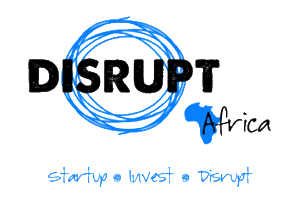“Ecosystem-building” has become a buzzword in recent years, and it’s encouraging to see growing attention on what it takes to support entrepreneurs effectively. Still, beyond the jargon, it’s worth pausing to ask: are we actually serving entrepreneurs, or just creating another layer of infrastructure when we reference ecosystem building?
That’s the question posed by Susan Nakami, regional lead for Africa at Village Capital, in this guest post for Disrupt Africa.
At its core, ecosystem-building is a long-term commitment to creating an environment where local entrepreneurs can thrive consistently, not just once in a while. It goes beyond bringing people together, running well-funded accelerators, or launching one-off programmes. It’s about strengthening the social, financial, and institutional systems that support entrepreneurs, closing gaps in access to funding and networks, and designing support that fits the local context, not a one-size-fits-all model.
When done right, ecosystem building builds trust, grows local knowledge, supports local leaders, and helps everyone work together toward lasting impact so innovation becomes the norm, not the exception.
Centering Local Leadership
Having worked in the entrepreneurship ecosystem for 12 years and reflecting on the work we do at Village Capital, I find that ecosystem-building is inseparable from local ownership. Every entrepreneurial landscape is shaped by its own cultural, economic, and historical forces.
Effective ecosystems are conscious of those nuances, and this is what makes locally-led Entrepreneur Support Organisations (ESOs) a key stakeholder in ecosystem-building. Rooted in the communities they serve, ESOs understand the barriers and opportunities entrepreneurs face because of shared experience with bureaucratic hurdles, funding challenges, and market dynamics.
Beyond proximity, their deep, ongoing involvement in the community gives them unique insight into the challenges and opportunities local entrepreneurs face. With cultural fluency and community trust, these organisations offer insights that are deeply attuned to local realities and can quickly adapt to changing needs.
Additionally, they create lasting systems of support, whether through funding, mentorship, or access to networks, that external actors, no matter how well-intentioned, often overlook.
This insight is increasingly reflected across the sector. ANDE’s Entrepreneurial Ecosystem Diagnostic Toolkit and Scale Framework, for example, emphasize the need for locally-rooted organisations.
We’ve seen firsthand that embedded, trusted support often makes the difference between a struggling startup and a resilient, growing business. Initiatives like the Empowering Sustainable Entrepreneurship Africa (ESEA), supported by Norad, further demonstrate that when locally-led ESOs are resourced and trusted, they can catalyze scalable solutions tailored to urgent challenges like climate resilience and economic development.
Through these experiences, a few lessons have emerged from the field, some hard-earned, have become clear:
Recognising our shared ground: There is an ongoing narrative that ESOs work in isolation, and indeed, we’ve seen examples of that. But if we look closer, there’s a deeper reality: many of us are tapping into the same entrepreneurial pipelines, relying on common donor networks, and operating within overlapping markets. Recognising this shared ground forces us to ask: what would it look like to move beyond parallel play toward true collaboration?
Maximising complementary strengths: No single actor holds all the keys. Some bring funding, others bring technical expertise, and others bring community. When we work together, deliberately aligning these complementary strengths, we build stronger, more resilient ecosystems. This isn’t just theory; we’ve witnessed how intentional partnerships can amplify both reach and depth of support. To strengthen the ESEA programme, we’ve leveraged the expertise of partners like Ocean Hub, Riffle Ventures, and other specialist organisations. Their insights have provided the technical and thematic support crucial to the programme’s success. This collaborative approach has similarly been embraced by the ESOs we’ve partnered with, who have integrated it into their own venture programming. As a result, they’re able to offer more tailored and impactful support to entrepreneurs in their communities.
Turning synchronised efforts into strategic opportunities: Often, programmes, funds, and initiatives run concurrently, targeting similar entrepreneurs. Could synchronicity become a strength? Could we share learnings earlier, align strategies, or co-create interventions? We don’t have all the answers yet, but we believe fostering openness and mutual visibility is an important first step.
Cultivating a truly collaborative ecosystem: Collaboration can’t just be a value; it has to become a daily practice. That means regular communication, shared planning, honest conversations about failures, and, perhaps most importantly, the humility to prioritise ecosystem value over organisational ego. In practice, this means actively sharing knowledge, resources, and expertise, co-designing initiatives, and recognising that no single player can thrive in isolation. Organisations must remain adaptable, listening to multiple perspectives and contributing to solutions that may not provide immediate returns but drive lasting, transformative impact for the entire ecosystem. Ultimately, it’s about building relationships based on patience, mutual trust, and an unwavering commitment to collaboration as the key to systemic change.
Driving long-term impact through collective action: Impact doesn’t happen in 12-month grant cycles. It happens through patient, sustained investment in local actors and shared infrastructure. It happens when we pool resources intelligently and trust communities to lead their own growth.
At its best, ecosystem-building isn’t a project. It’s a commitment to centering local expertise, embracing collaboration over competition, and learning continuously, not because it’s easy, but because it’s the only way sustainable and systemic change happens.
As we look ahead, the real question is not whether we believe in ecosystems, it’s whether we are willing to build them the hard way: together, with patience, trust, and an unwavering belief in the entrepreneurs we serve.


